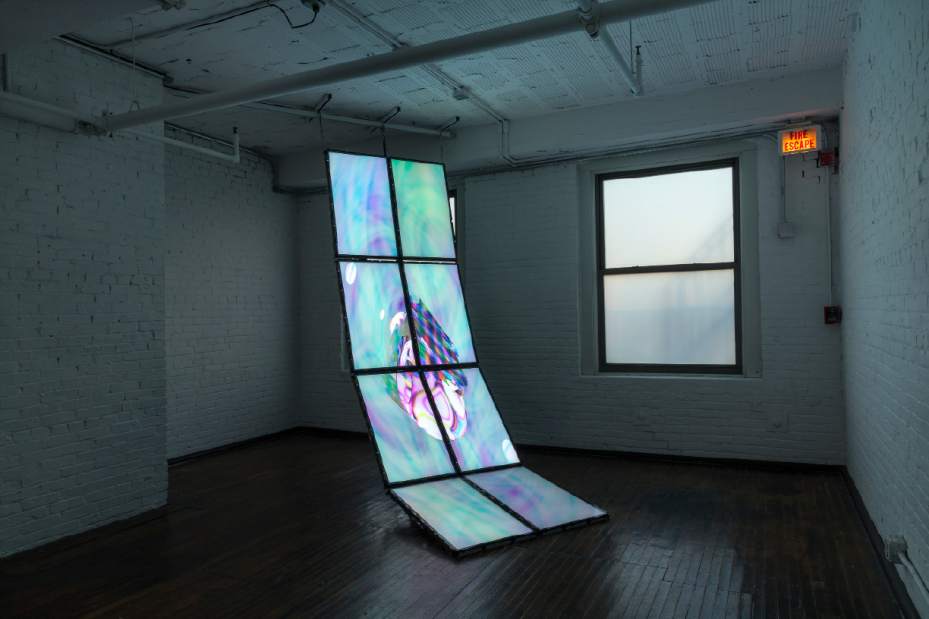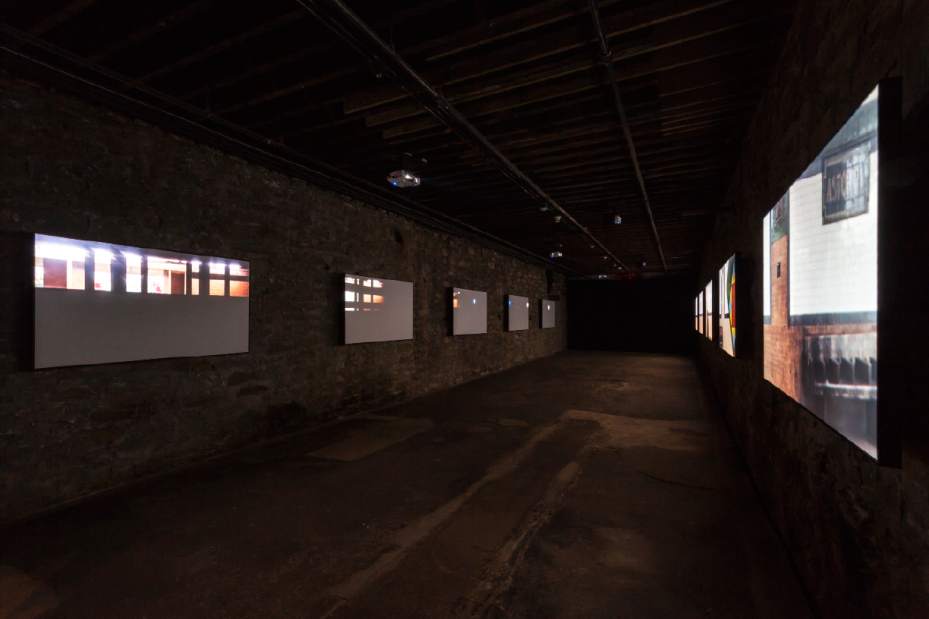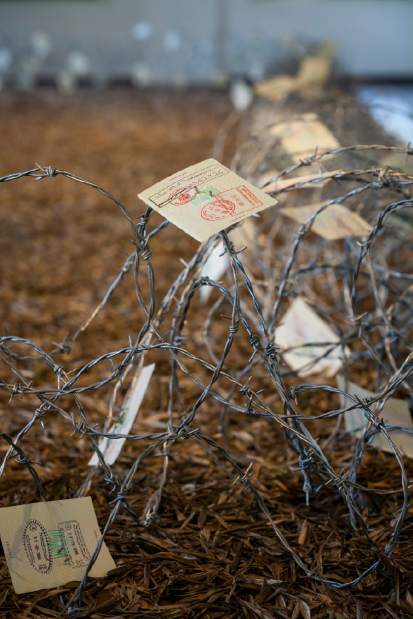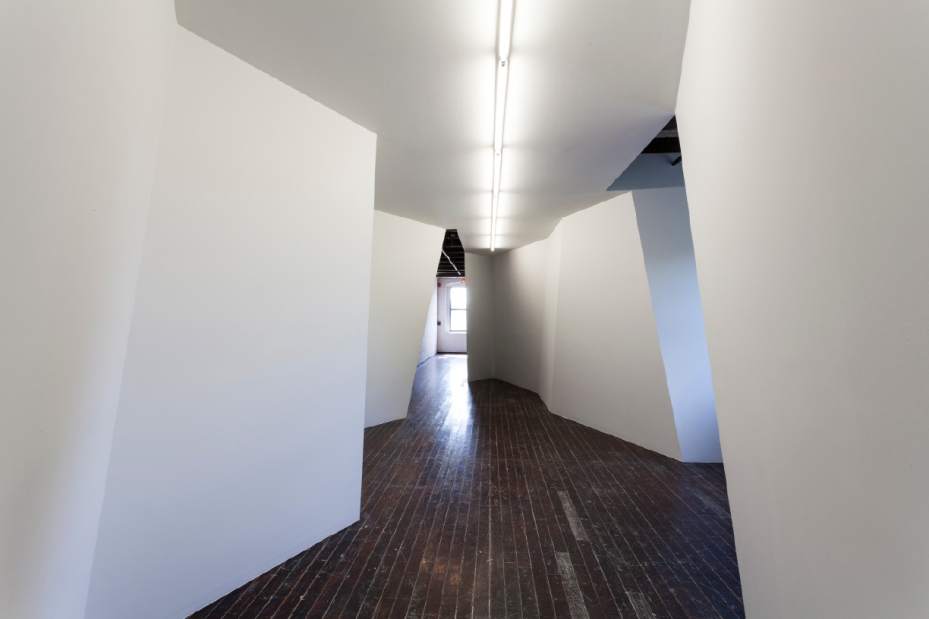Mattress Factory's new installation art gives hints of other places
Last fall, the Mattress Factory's ongoing exhibit series “Factory Installed” gave us Marnie Weber's “Ghost Train” in which a spooky cast of characters had pulled into the basement of the Mattress Factory, offering visitors a spooktacular site. Now, New York City-based artist Ezra Masch brings us “Stations,” a multichannel video installation that replicates a ride on a subway train. It's one of four new “Factory Installed” exhibits that opened in late September.
“Stations” was created with cellphone footage shot simultaneously from 10 windows of a moving subway train in New York City. Together, they create a seemingly real-time experience of traveling on the subway system.
“I live in Manhattan, and I ride the subway every day,” Masch says. “About a year ago, I started making drawings and video sketches on the train as a daily practice.”
Masch filmed “Stations” earlier this year, at a time he says he couldn't afford a studio in New York. Working on the subway allowed him to continue making art, even if it was just little bits and pieces here and there.
“I recorded a lot of video through the windows of the train, and I became really interested in the blurred images and abstractions that happened as a result of the moving camera,” he says.
For his installation, Masch asked people (mostly strangers) to shoot video with their cellphones from different windows of the train all at once. The result is a kind of fragmented moving panoramic image that changes along with the speed of the train and the depth of the shot.
The videos are projected onto the walls of the basement at equidistant intervals. The gaps in between the screens imply the space of the train's interior.
With this project, Masch says his goal was to use video in a sculptural way. In other words, by defining form through a relationship of moving images, Masch says, “I hope to create an immersive audio-visual experience that will transport the viewer to another space.”
Upstairs, on the museum's second and third floors, visitors are privy to a variety of installation art experiences, from Chicago artist Christopher Meerdo's compilation of police officer body-camera chase videos titled “Active Denial System,” to the barbed-wire-encircled piece “The Great Illusion” by Mohammed Musallam, an artist who lives and works in Gaza as a lecturer at the College of Arts, Al Aqsa University.
Musallam's installation expresses the reality of life in Gaza, where he says he lives alongside two million other Palestinians on “a very small piece (of land), just a 360-kilometer square” under occupation from a crippling blockade for the past 10 years.
“There is a lot of difficulties in our life in Gaza,” Musallam says. “For example, we have only six hours of electricity a day and two or three hours of running water a week.”
Musallam says the most difficult thing though, is traveling out of Gaza.
“When anyone from Gaza wants to travel abroad, they can only within three conditions,” he says. “The first (is) to be a university student studying abroad, secondly to carry a foreign passport in addition to his Palestinian passport and third, in critical medical conditions that require surgery abroad.”
Anyone who lives in Gaza who wishes to travel under these conditions must register with the Interior Ministry of Hamas, and then wait for their turn to travel. Musallam says it usually takes one year a minimum, “because the crossing opens every three or four months for a few days only.”
“I still recall how I waited a whole year to leave Gaza to Cairo to complete my Ph.D. This is the complexities of travel in Gaza that I try to express in my installation,” he says.
To that end, Musallam has delineated a large rectangular area of the floor of one gallery with olive leaves surrounded by barbed wire. In the barbed wire are ripped pages from a passport, each filled with passport stamps.
“The Oslo peace agreement is supposed to give us the freedom to travel, but the truth is completely different,” Musallam says. “This passport is worth nothing and (does) not give us the most basic rights to travel just like any other human beings.”
Musallam says the olive leaf is very symbolic in Palestinian culture. “It has a great significance to our roots in Palestine and our attachment to the land,” he says. “It is also an important indication of peace, that we dream just like any other human beings.”
Topping off the piece, passport covers folded in the form of a paper airplanes symbolize “the dream of flight and freedom.”
“I believe that the passport is a dirty political tool to differentiate between humans and allow only some people to pass through while rejecting others,” Musallam says. “The value of humans today (is) determined by their passport. It is very sad.”
Then there is the work of Stephen Bram of Melbourne, Australia. His piece “Third floor West gallery 500 Sampsonia Way” is a work you can walk into.
“I want to give the viewer maximum freedom in interpreting the work but, at the same time, refer to something real and specific,” Bram says of the piece, which is made of walls that slant and meet the visitor at every turn. “I try to do this by making abstract works in relation to points in real space.”
Bram has been making works like this for the past 29 years, and he says, “In the course of this now 29-year project, I have made works in painting, film, sculpture, photography and architecture or something like it.”
The work at the Mattress Factory is one of these “architectural works.”
“All of the works refer to specific points in space — and in a sense they all refer to the same points and each other,” he says. “A bit specialized I know, but that is what I do.”
Kurt Shaw is the Tribune-Review art critic.




